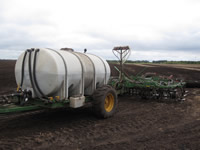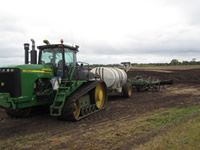Soil fumigants are pesticides that, when applied to soil, form a gas to control pests that live in the soil and can disrupt plant growth and crop production. Soil fumigants are used on many high value crops and provide benefits to growers in controlling a wide range of pests, including nematodes, fungi, bacteria, insects, and weeds.
As gases, however, fumigants move from the soil to the air at the application site and may move off site at concentrations that can produce adverse health effects in people from hours to days after application. These health effects range from mild and reversible eye irritation to more severe and irreversible effects, depending on the fumigant and the level of exposure.
The Environmental Protection Agency (EPA) has implemented important safety measures for soil fumigant pesticides. These safety measures increase protection for agricultural workers and for people who live, work, or otherwise spend time near fields that are fumigated. These measures are included on the product label and are listed below. Applicators must be licensed and follow the label requirements.
Soil Fumigant Label Requirements:
- Restricted Use Pesticide (RUP) Classification
- Mandatory Good Agricultural Practices
- Application Method, Practice and Rate Restrictions
- Handler Protection - Restrictions address respiratory protection, tarp handling and an entry-restricted period.
- Handler Training Information
- Site-Specific Fumigant Management Plans (FMP)
- Buffer zones
- Posting Requirements for Buffer Zones
- Emergency Preparedness and Response Requirements
- Applicator Training Programs
- Information for Handlers, Communities, and First Responders
Applicator Licensing Resources at the University of Minnesota Extension
- Minnesota Commercial, Noncommercial and SPCA Fumigant Licensing, Private Applicator Endorsements, and Recertification
- Soil Fumigation Category O Study Manual from the University of Minnesota
- Minnesota Pesticide Applicator Recertification Requirements
- Minnesota Private Applicator Certification, Recertification and Exams




